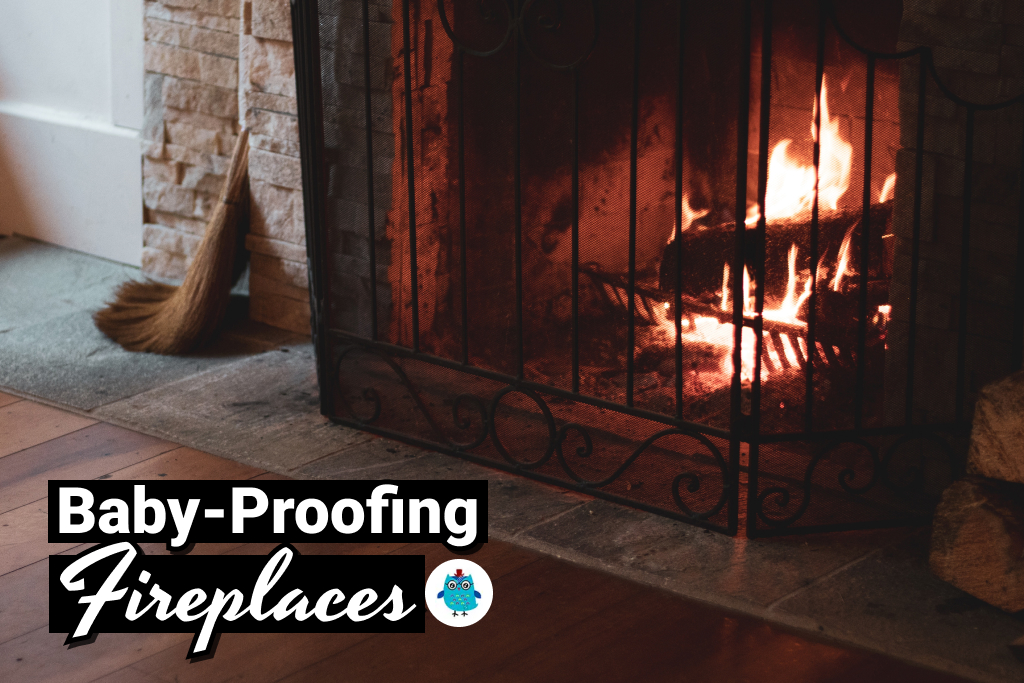As a father to two curious little adventurers, I know how attractive the warm glow of a fireplace can be to young children. Yet, behind that glow lurks potential dangers such as burns, cuts, splinters, and bruises. Whether you’re dealing with a standard wood-burning, gas, or electric fireplace, baby-proofing is essential.
I’ve been through the process. I’ll share my experiences, tips, and product recommendations that have helped me baby-proof our home’s fireplace.
In this article, I’ll discuss the key areas you should focus on:
Learn how to baby-proof your fireplace effectively with this guide. Discover essential tips to baby-proof the hearth, grate, doors, firewood, tools, and chimney.
How Can You Baby Proof the Fireplace Hearth?
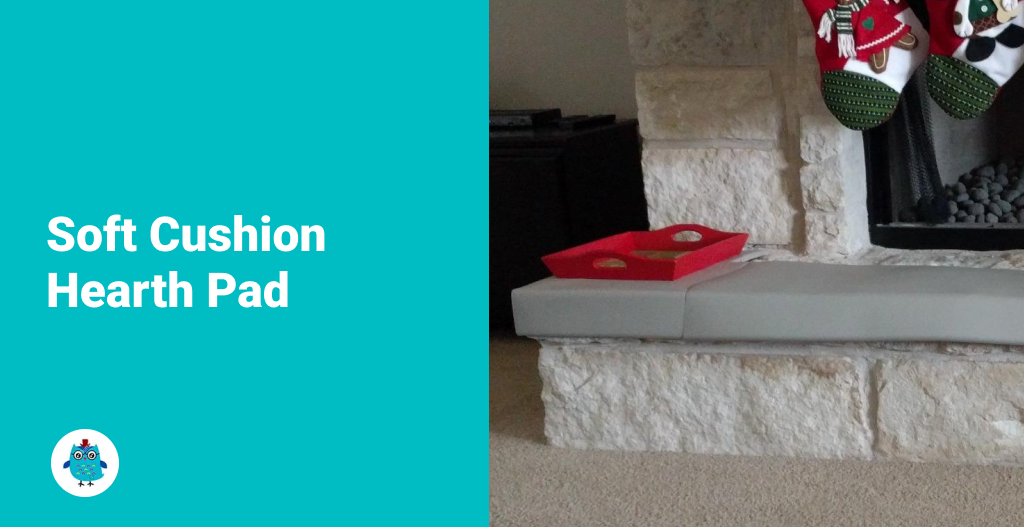
The hearth may seem innocent, but it poses significant risks to our curious little explorers. Its sharp corners and hard surfaces can be a recipe for accidents.
So how can we mitigate these risks?
My wife and I first considered placing a free-standing baby gate around the fireplace. Still, it took away from the room’s aesthetics. We wanted to maintain our living room’s warm and inviting atmosphere without compromising safety.
That’s when we discovered fireplace cushions.
Padded covers are designed to fit over the hearth’s edges and corners. I’ve found them easy to install and come in different varieties.
- Corner Pad: We used the KidKusion Corner Pads
 , which blend well with our decor and do a perfect job. These hearth cushion bumpers are attached to the edge of the hearth, softening the hard and sharp edges.
, which blend well with our decor and do a perfect job. These hearth cushion bumpers are attached to the edge of the hearth, softening the hard and sharp edges. - Soft Seat Hearth Pad: The KidKusion Soft Seat Hearth Pad
 is another popular choice. It’s easy to cut to fit, adheres securely, and can be cleaned easily. These cover the edges and the entire hearth surface, offering more comprehensive protection.
is another popular choice. It’s easy to cut to fit, adheres securely, and can be cleaned easily. These cover the edges and the entire hearth surface, offering more comprehensive protection.
But you can get creative if these don’t suit your taste or budget. Some parents I’ve met used DIY methods, such as placing a soft play mat or repurposing an old mattress topper to cover the hearth area.
or repurposing an old mattress topper to cover the hearth area.
Now, let’s move on to the next critical piece.
How Can You Baby Proof the Fireplace Grate?
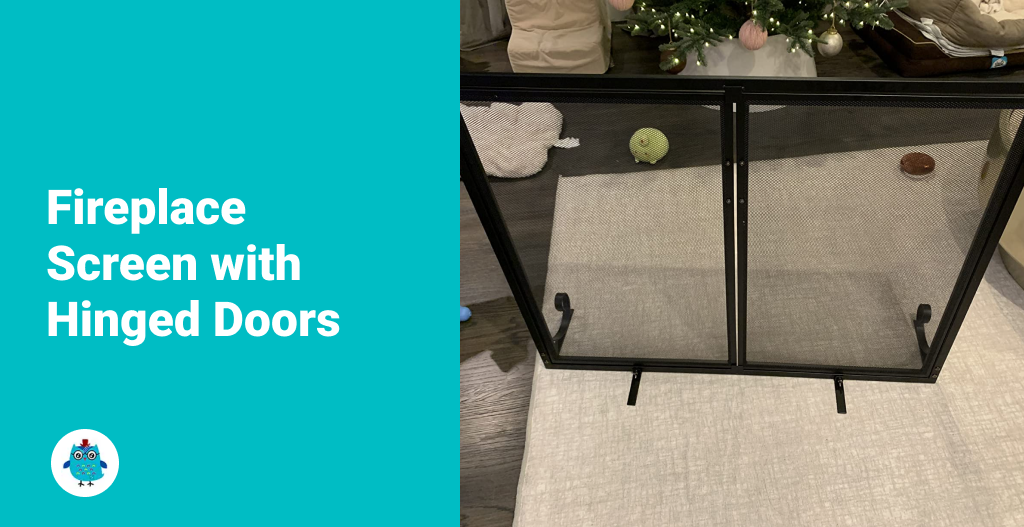
The metal grate of a fireplace can be a source of fascination for tiny hands, but it’s also a potential danger. Let’s explore how to secure this area, ensuring those curious fingers stay safe and your peace of mind remains intact.
In fact, the American Burn Association reports that toddlers and young children are at the highest risk for burns, and household objects like fireplace grates often contribute to these injuries.
reports that toddlers and young children are at the highest risk for burns, and household objects like fireplace grates often contribute to these injuries.
Fireplace screens and gates are a strong physical barrier between your child and the grate. Some even do this without obstructing the warmth and beauty of the fireplace.
There are several excellent options on the market:
- Free-Standing Fireplace Screens: These screens sit in front of the grate and block access. We used this one
 . It’s a perfect blend of safety and aesthetic. Ensuring a child-proof barrier through a specially placed handle and strong magnet. The door hinge employs long piano hinge welding that prevents fingers from pinching.
. It’s a perfect blend of safety and aesthetic. Ensuring a child-proof barrier through a specially placed handle and strong magnet. The door hinge employs long piano hinge welding that prevents fingers from pinching. - Fireplace Gates: For more versatile protection, consider a fireplace gate. This forms a larger fence around the entire fireplace area. My parents got the Regalo Super Wide Play Yard
 for when we visit with the kids. I’ve found it to be very effective. It’s flexible, easy to set up, and even doubles as a playpen!
for when we visit with the kids. I’ve found it to be very effective. It’s flexible, easy to set up, and even doubles as a playpen!
While screens and gates were our solutions, I’ve known other parents to get creative with DIY methods. Some have used heavy furniture to block access to the fireplace when it’s not in use. It’s a temporary solution I would consider if I rent a vacation home for a week. Still, I would be tempted to bring a free-standing baby gate.
With the hearth and grate safely secured, it’s time to tackle the third piece of the puzzle.
What Steps Can You Take to Baby-Proof Fireplace Doors?
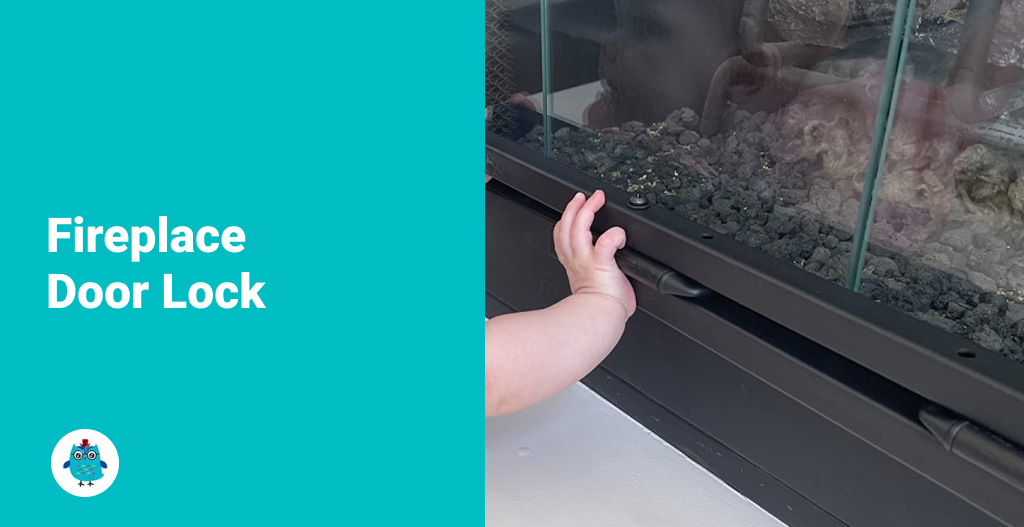
My youngest, bless his curious heart, was utterly captivated by the reflective glass on our fireplace doors. However, they can become incredibly hot during and after a fire, posing a burn risk. They might pinch tiny fingers when slammed shut, and let’s not forget the danger of shattered glass if they were to break.
In fact, according to the Consumer Product Safety Commission , over 2000 children under five were admitted to the ER due to injuries from glass-fronted gas fireplaces between 1999 and 2009. So, how can we, as vigilant parents, tackle these risks?
, over 2000 children under five were admitted to the ER due to injuries from glass-fronted gas fireplaces between 1999 and 2009. So, how can we, as vigilant parents, tackle these risks?
- Fireplace Child Lock: The first line of defense we found was a specialized lock for the fireplace doors. We chose the Safety Innovations Fireplace Door Lock, which was easy to install and kept the doors securely closed.
- Standard child-proof Door Lock: Depending on the type of door and the handles your fireplace is made with. You could consider a standard U-shape child lock
 used for baby-proofing cabinets. However, these things could not resist the exposure of the heat of a burning fire. So it might be a solution when the fireplace is not in use.
used for baby-proofing cabinets. However, these things could not resist the exposure of the heat of a burning fire. So it might be a solution when the fireplace is not in use. - Free-Standing Fireplace Screens: We decided to use a free-standing fireplace screen in addition to the lock. This way, even if the doors were hot, our little one couldn’t get close enough to touch them. As I mentioned above, I got this fireplace screen
 , and it’s been fantastic at keeping the kids safely away from the doors.
, and it’s been fantastic at keeping the kids safely away from the doors.
Another measure we took is to consistently remind our children that the fireplace is a “no-touch zone.” Repetition and reinforcement have proven to be just as vital as physical measures in our baby-proofing journey.
If you want a temporary DIY solution to secure the fireplace door. Use a tie wrap or a rubber band to prevent the door from opening.
Our baby-proofing job is not over now that we have secured the fireplace. Our next stop is the firewood and tools.
What Risks Do Firewood and Fireplace Tools Present to a Baby?
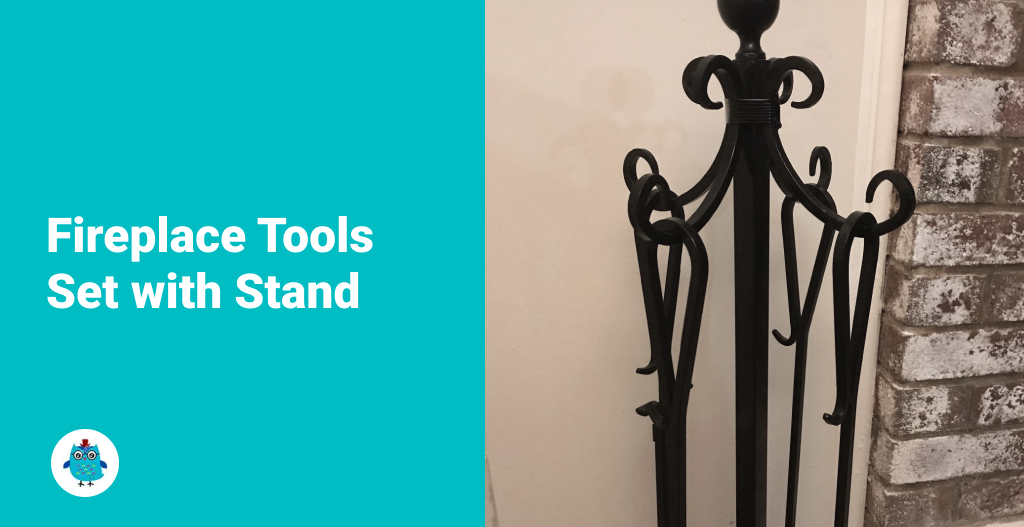
These are the things that make a fireplace functional, but they’re also potential hazards for babies. As I watched my older one play “Zoro” with the fireplace poker one day, it struck me how easily we can overlook firewood and fireplace tools’ threats to our children.
Here are my strategies for keeping firewood and tools out of reach.
- Keep the woods away: We started by moving all the firewood to a storage area outside.
- Keep the axe away: I always had a mini axe with my firewood to make fire starters, but now the axe is stored with the wood outside.
- Keep the matches and lighter away: If you are using chemical fire starters, it’s vital that you don’t leave them at your child’s reach. Please put them in a box and the matches on a shelf or inside a locked cabinet.
- Fireplace tools stand: Remember my kid using the poker as a sword? He managed to take it out of the stand so easily that I decided to look for a child-proof stand. After hours of searching, I found no specific child-proof products. Still, the search brought up the Amagabeli Fireplace Tool Set with Stand.
 This set was perfect. It had rounded hooks that locked the tools in place, making it very hard for our little ones to pull them out and play with them.
This set was perfect. It had rounded hooks that locked the tools in place, making it very hard for our little ones to pull them out and play with them.
Now, we’re almost at the end of our baby-proofing journey. But we’ve got one more area to tackle – the chimney.
How Can You Baby Proof the Chimney?
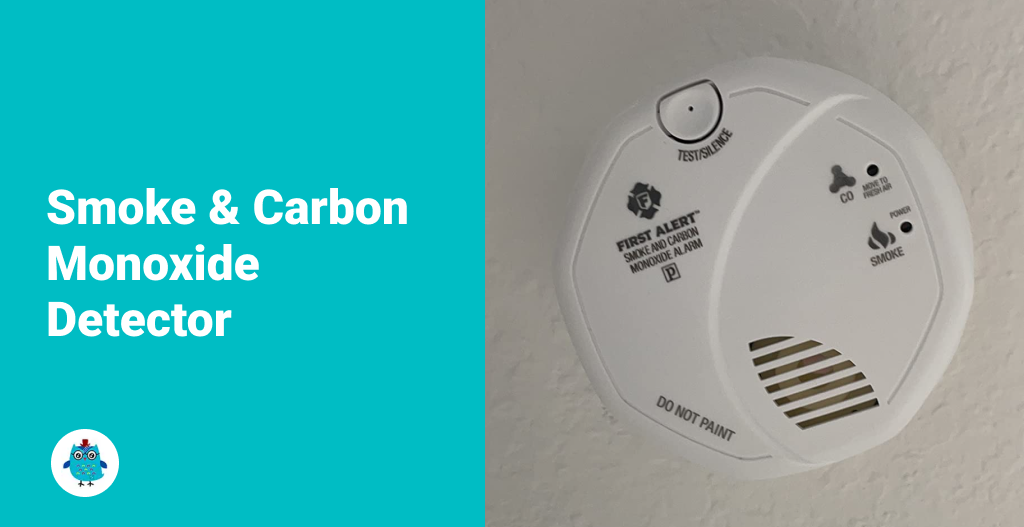
When we think about fireplaces, we often focus on what’s in front of us and need to remember what’s above. Chimneys can pose risks, too. We may not see these as imminent risks, but as parents, we know that the smallest hazards can often lead to trouble.
Baby-proofing our home is about protecting our children, and making sure the chimney of our fireplace is not dangerous is also part of our mission.
In fact, The National Fire Protection Association warns that the buildup of creosote, a substance resulting from burning wood, can lead to chimney fires. While a properly functioning chimney should safely vent this, accidents do happen. So how did we make our chimney safer?
warns that the buildup of creosote, a substance resulting from burning wood, can lead to chimney fires. While a properly functioning chimney should safely vent this, accidents do happen. So how did we make our chimney safer?
- Chimney cap: These prevent wildlife from entering the chimney and can also stop any loose debris or ash from falling out into the fireplace. A Bolted Chimney Cover
 was our choice, giving me peace of mind.
was our choice, giving me peace of mind. - Check the chimney damper: Make sure your damper is working properly, allowing you to close the chimney when it’s not in use fully. If you’re unfamiliar with the damper, it’s like a door for your chimney. It can be opened when you have a fire to let smoke out and should be closed when not in use.
- Annual chimney sweep and inspection: A professional can thoroughly clean the chimney, check the damper, and ensure no blockages.
- Detectors: We chose the First Alert Smoke Detector and Carbon Monoxide Detector Alarm
 to safeguard our home. It’s a combination alarm that detects both smoke and CO. The device has a voice alert system that tells you whether there’s a fire or carbon monoxide, making responding appropriately easier.
to safeguard our home. It’s a combination alarm that detects both smoke and CO. The device has a voice alert system that tells you whether there’s a fire or carbon monoxide, making responding appropriately easier.
Now that we’ve navigated fireplace safety ins and outs let’s wrap up our discussion.
Conclusion
Remember, safety is a continual process, not a one-time task. Regularly inspect your fireplace, and instill in your little ones a healthy respect for the fireplace’s “no-touch zone.” We’re doing this to protect our children and enjoy the warmth and comfort of our fireplaces without worry.
I hope these tips and stories give you some peace of mind and a place to start when baby-proofing your home. Remember, the goal is to balance safety, functionality, and aesthetics.
Start baby-proofing your fireplace today.

